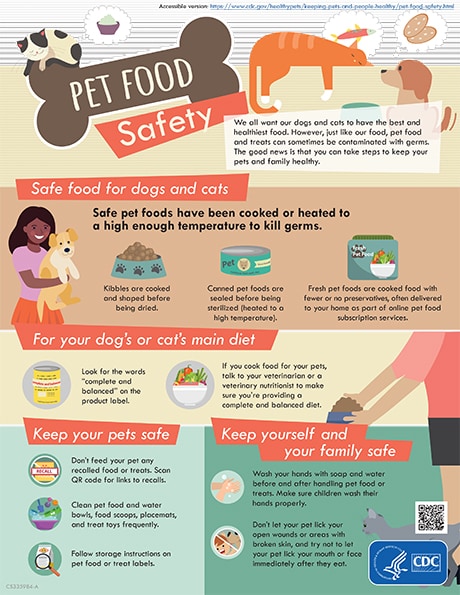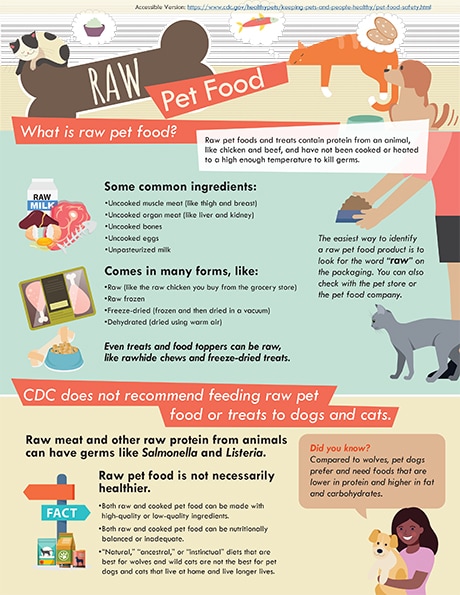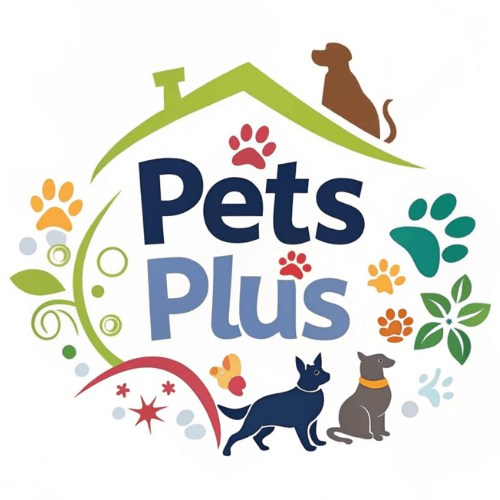As pet owners, one of our primary responsibilities is to provide our furry friends with proper nutrition and food security. However, with the ever-increasing costs of pet food and the abundance of options available in the market, ensuring that our pets receive the right diet can be challenging.
In this article, we will explore some practical tips and strategies to give your pet food security. From understanding their nutritional needs to finding affordable and high-quality food options, we will help you put your pet on the path to a healthy and well-nourished life. So, let’s dive in and discover how you can keep your pet’s food security in check!

How to Give Your Pet Food Security
As pet owners, we all want to ensure that our furry friends receive the best possible care, and that includes providing them with a consistent, healthy diet. However, with so many different types of pet food available on the market, it can be overwhelming to know which one to choose. In this article, we will discuss ten different ways you can give your pet food security, so that you can feel confident that you are providing them with the best possible nutrition.
1. Choose a High-Quality Pet Food
The first step in giving your pet food security is to choose a high-quality pet food. Look for brands that use only the best ingredients, and that have a good reputation within the pet community. You can also talk to your veterinarian for recommendations on which types of pet food would be best for your pet’s specific needs.
When selecting a pet food, be sure to read the label carefully to ensure that it contains all the necessary nutrients your pet needs. Look for ingredients like protein, carbohydrates, and healthy fats, as well as essential vitamins and minerals.
2. Consider a Raw Food Diet
If you want to give your pet the best possible nutrition, you might consider a raw food diet. Raw food diets are made up of uncooked, minimally processed ingredients, and are often considered a more natural and healthy option for pets.
However, it is important to note that raw food diets can be more expensive and time-consuming to prepare than traditional pet foods. Additionally, they can be risky if not prepared properly, as they can contain harmful bacteria that can make your pet sick.
3. Use a Food Dispenser
Another way to give your pet food security is to use a food dispenser. Food dispensers can be programmed to dispense a certain amount of food at specific times of the day, which can help ensure that your pet is getting the right amount of food and is not overeating.
Food dispensers are especially useful for busy pet owners who may not be able to feed their pets at regular intervals throughout the day. They can also be helpful for pets who tend to eat too quickly or who have a tendency to overeat.
4. Consider a Prescription Diet
If your pet has specific health concerns, your veterinarian may recommend a prescription diet. Prescription diets are specially formulated to meet the unique nutritional needs of pets with specific health conditions, such as kidney disease, diabetes, or obesity.
Prescription diets can be more expensive than traditional pet foods, but they can be an important part of managing your pet’s health and ensuring that they receive the proper nutrition.
5. Use a Slow-Feeder Bowl
If your pet tends to eat too quickly, a slow-feeder bowl can be a helpful tool to give your pet food security. Slow-feeder bowls are designed to make it more difficult for pets to eat quickly by forcing them to work harder to access their food.
These bowls can be especially helpful for pets who are prone to gastrointestinal issues or who tend to vomit after eating too quickly. They can also help prevent obesity by slowing down your pet’s eating habits.
6. Try a Food Puzzle Toy
Food puzzle toys are another way to give your pet food security. These toys are designed to provide mental stimulation and entertainment for your pet while also providing them with a small amount of food.
Food puzzle toys can be especially helpful for pets who are prone to boredom or who have anxiety issues. They can also be a great way to help your pet lose weight by providing them with a fun and interactive way to exercise and burn off calories.
7. Practice Portion Control
Portion control is an important part of giving your pet food security. Be sure to measure out your pet’s food carefully to ensure that they are getting the right amount of food for their size and activity level.
Overfeeding your pet can lead to obesity, which can cause a variety of health problems. By practicing portion control, you can help ensure that your pet is getting the right amount of food and is not at risk for health issues related to overeating.
8. Store Pet Food Properly
Properly storing your pet’s food is another important part of giving your pet food security. Be sure to store your pet’s food in an airtight container to keep it fresh and prevent pests from getting into it.
Additionally, be sure to check the expiration date on your pet’s food and dispose of any expired food immediately. Eating expired food can make your pet sick and can be dangerous to their health.
9. Consider a Multi-Vitamin Supplement
If you want to ensure that your pet is getting all the necessary vitamins and minerals they need, you might consider a multi-vitamin supplement. These supplements are designed to provide your pet with a balanced blend of essential nutrients to support their overall health and well-being.
However, it is important to note that not all pets need a multi-vitamin supplement. Talk to your veterinarian to determine whether a supplement would be beneficial for your pet’s specific needs.
10. Provide Plenty of Fresh Water
Finally, providing your pet with plenty of fresh water is an important part of giving them food security. Be sure to change your pet’s water bowl regularly and provide them with access to clean, fresh water at all times.
Dehydration can be dangerous to your pet’s health and can lead to a variety of health problems. By providing your pet with plenty of fresh water, you can help ensure that they stay healthy and hydrated.
In conclusion, there are many different ways to give your pet food security. By choosing a high-quality pet food, considering a raw food diet, using a food dispenser, practicing portion control, and providing plenty of fresh water, you can help ensure that your pet receives the best possible nutrition and stays healthy and happy for years to come.
Freequently Asked Questions
In this section, you will find answers to the most commonly asked questions about how to give your pet food security.
What is food security for pets?
Food security for pets means ensuring that your pet has access to enough nutritious food to maintain a healthy and active lifestyle. It involves providing a balanced diet that meets your pet’s nutritional needs and ensuring that they have access to clean water at all times.
One of the most important aspects of food security is consistency. Pets thrive on routine, and feeding them at the same time each day can help them feel secure and comfortable. It’s also important to monitor your pet’s eating habits and adjust their diet as needed to maintain a healthy weight.
What are some tips for ensuring food security for pets?
There are several steps you can take to ensure food security for your pet. First, choose a high-quality pet food that is appropriate for your pet’s age, size, and activity level. Read the label carefully and make sure that the food contains all the nutrients your pet needs to stay healthy.
Second, establish a feeding routine and stick to it as much as possible. Provide fresh water at all times, and make sure that your pet’s food and water bowls are clean and free from bacteria. Finally, monitor your pet’s weight and adjust their diet as necessary to maintain a healthy body condition.
How can I save money on pet food without compromising on quality?
One way to save money on pet food is to buy in bulk. Many pet stores and online retailers offer discounts when you buy larger quantities of food. You can also look for coupons and special deals on pet food, as well as signing up for loyalty programs that offer rewards for frequent purchases.
Another way to save money is to make your own pet food. There are many recipes available online for homemade pet food that can be nutritious and cost-effective. However, it’s important to consult with your veterinarian to ensure that the food you are making meets your pet’s nutritional needs.
What are some common mistakes pet owners make when it comes to feeding their pets?
One common mistake is overfeeding. Many pet owners mistakenly believe that giving their pets more food is a sign of love or affection, but this can lead to obesity and other health problems. It’s important to follow the recommended feeding guidelines for your pet’s age, size, and activity level.
Another mistake is giving pets human food as a treat. While it may be tempting to share your food with your furry friend, many human foods can be harmful or even toxic to pets. Stick to pet-friendly treats and snacks, and avoid giving your pet table scraps.
What should I do if my pet has a food allergy or intolerance?
If you suspect that your pet has a food allergy or intolerance, talk to your veterinarian. They can perform tests to determine the cause of your pet’s symptoms and recommend a special diet or medication to manage the condition.
If your pet is diagnosed with a food allergy or intolerance, it’s important to carefully read labels and avoid foods that contain the allergen. Your veterinarian can recommend appropriate substitutes or supplements to ensure that your pet is getting all the nutrients they need.

In conclusion, giving your pet food security is not just about providing them with enough food to eat. It’s about ensuring that they have access to a balanced and nutritious diet, as well as the means to obtain it. By taking proactive measures such as storing food in a safe and secure location, monitoring your pet’s eating habits, and seeking professional advice when necessary, you can help ensure that your furry friend stays healthy and happy for years to come.
Remember that food security is not just a matter of convenience, but a vital component of your pet’s overall well-being. By taking the time to understand your pet’s nutritional needs and providing them with the resources they need to meet those needs, you can help ensure that they thrive in every aspect of their life. So, whether you are a seasoned pet owner or just starting out, make sure that you are doing everything in your power to give your furry friend the food security they deserve.
